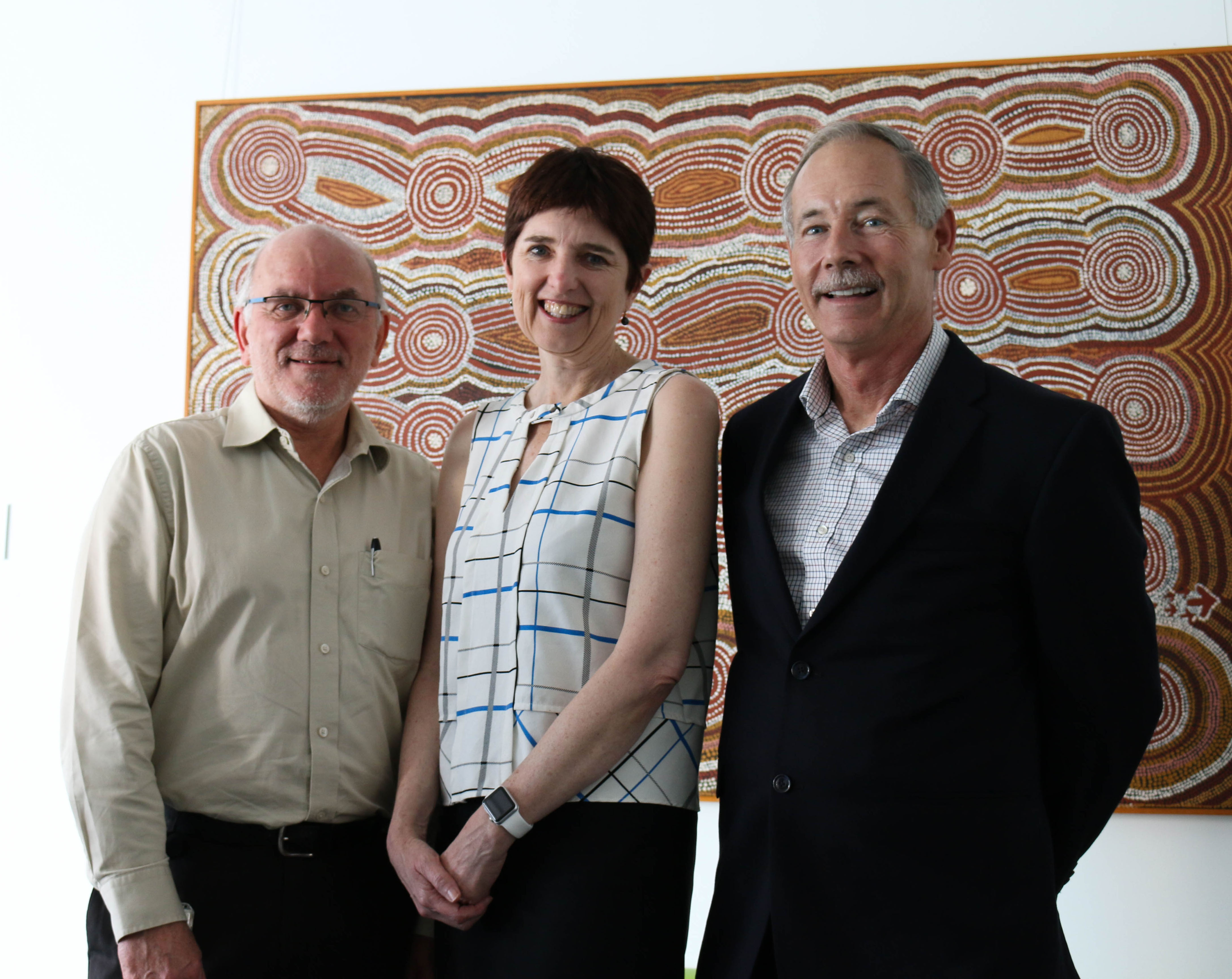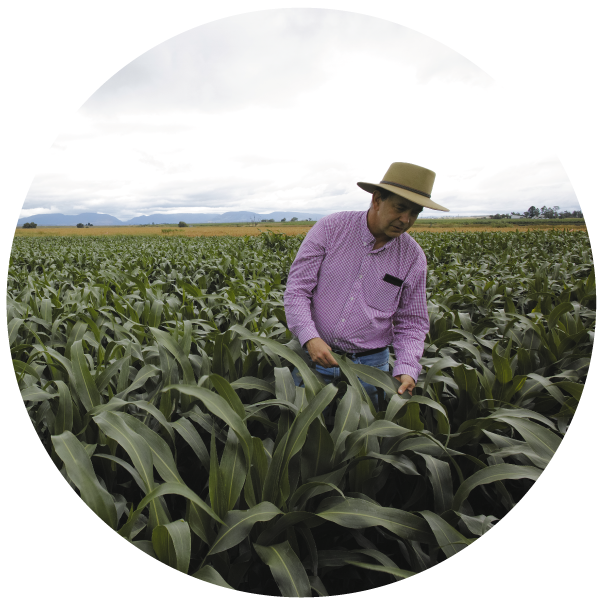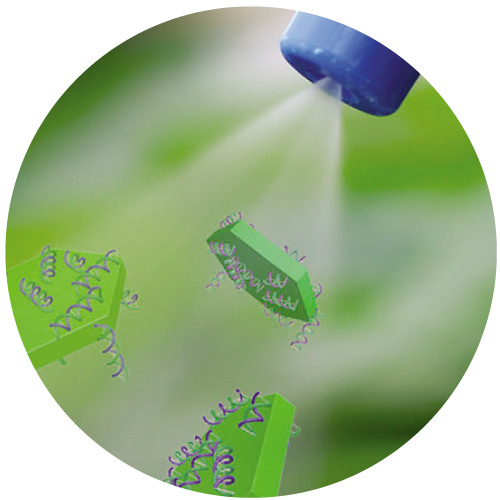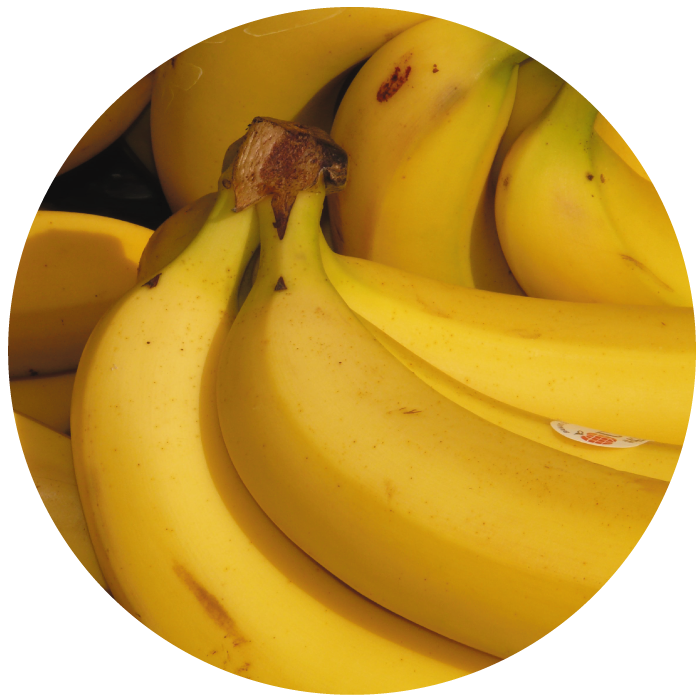QAAFI forges strategic industry partnerships to tackle local and global challenges in tropical and sub-tropical agriculture and food production. We work with the Bill & Melinda Gates Foundation on key projects to boost food and nutrition security in tropics and sub-tropics.
Gates Foundation visit to discuss crop improvement research Dr Jeff Ehlers, Senior Program Officer at the Bill & Melinda Gates Foundation visited UQ on October 5, 2017 to review ongoing projects between the Gates Foundation and UQ.

Plant breeding boost in Africa and Asia
“This is a very exciting project because it will contribute to making a real difference to millions of resource-poor farmers worldwide.” – Dr Chris Lambrides
The University of Queensland is implementing the Bill & Melinda Gates Foundation’ Breeding Program Analysis Tool (BPAT). UQ School of Agriculture and Food Sciences project leader Dr Chris Lambrides said the project would identify ways of improving breeding programs, leading to greater genetic gains and on-farm profitability. “We will be using the BPAT tool developed by the Gates Foundation across key public sector plant breeding programs in Africa and Asia for sorghum, rice, maize, wheat, cowpea, chickpea, common bean, groundnut, yam, sweet potato, cassava, and banana,” Dr Lambrides said. Project co-leader, QAAFI’s Professor David Jordan, said sorghum was a great example of the gains that can be achieved by effective plant breeding even in difficult dryland cropping environments. The BPAT project involves developing a website to act as an information hub and encourage organisations to conduct selfassessments using the tools available online. The project is reviewing breeding programs in 11 key African and Asian geographic regions – Mali, Burkina Faso, Nigeria, Ghana, Ethiopia, Uganda, Tanzania, Bangladesh and the Indian states Bihar, Orissa, Uttar Pradesh.
 Growing more sorghum with less water
Growing more sorghum with less water
“It’s crucially important to food security in Africa as sorghum is grown in the drier and resourcepoor areas, where its capacity to better tolerate drought, high temperatures and low fertility make it a preferred crop to maize.” – Professor David Jordan
Professors David Jordan and Graeme Hammer of QAAFI’s Centre for Crop Science first received support from The Bill & Melinda Gates Foundation in 2012, to build capacity and productivity for sorghum breeding programs in sub-Saharan Africa and other water-limited environments. This was followed by a four-year $4.6-million project investigating problems common to sorghum growers in low-rainfall regions across the globe, involving one of the largest drought tolerant sorghum research projects ever undertaken. Sorghum is the world’s fifth most important cereal and a staple food crop for half a billion people in the semi-arid tropics, including Asia and Africa. The project involved the use of sophisticated computer modelling to exploit new marker technologies, which allow rapid development of new varieties. “We’re looking at things like root architecture and designing root systems for sorghum plants that access water deeper down in the profile,” Professor Hammer said. “We’re also looking at transpiration efficiency – that’s the efficiency with which a plant uses water to make grain – and there’s quite a variation with sorghum for both those traits.” The project investment supported development of advanced phenotyping platforms to evaluate large numbers of plant varieties in order to generate a step-change in information to enhance research into crop growth, water use efficiency and drought adaptation.
 The future of BioClay
The future of BioClay
“We can target any virus – or combination of viruses – that cause crop losses without killing insects and with no toxic effects to humans or the environment.” – Professor Neena Mitter
UQ researchers from QAAFI and the Australian Institute of Biotechnology and Nanotechnology (AIBN) have made a discovery that could help conquer one of major threats to global food security – pests and diseases in plants. With initial support from The Bill & Melinda Gates Foundation, BioClay – an environmentally sustainable alternative to chemicals and pesticides – has potential to be a gamechanger for crop protection. Viruses are part of the pest and pathogen burden that reduces food production globally by 20% to 40%, affecting an estimated 795 million people – one in nine – without enough food to lead a healthy, active life. “Not only are viruses causing food losses, the chemicals we use to control their insect vectors have toxicity issues to human health, to our waterways from run-off, and to the environment,” Professor Mitter says. Her new approach involves boosting the plant’s own defences, priming them in the manner of a vaccine to naturally attack specific viruses. A spray of nano-sized degradable clay is used to release doublestranded RNA that protects plants from specific disease-causing pathogens. The technology reduces the use of pesticides without altering the genome of the plants.
 Eradicating bunchy top from Australia to Africa
Eradicating bunchy top from Australia to Africa
“The project will look to Southeast Asia, where many bananas and their diseases originate, to identify wild species of seeded bananas that may have natural resistance to bunchy top.” – Associate Professor John Thomas
Queensland scientists are tackling one of the world’s worst threats to banana crops – bunchy top disease – with help from the Bill & Melinda Gates Foundation in the form of a $US5.7 million investment. Led by QAAFI’s Associate Professor John Thomas, the research aims to tackle bunchy top disease by strengthening the ability to control and eradicate the disease globally. The project involves controlling bunchy top in Nigeria and Benin, and looking for sources of resistance in Southeast Asia – the ground zero of banana disease. First identified in Fiji in 1889, bunchy top has since spread around the world. Although not native to Africa, bananas have become an important food source for over 100 million people in sub-Saharan Africa and a source of income for over 50 million small-holder farmers. In Africa the project aims to rehabilitate lost production areas at a community level in Nigeria and Benin and to search for wild species of seeded bananas that may have natural resistance to bunchy top. “The virus is controllable and with considerable effort you can get rid of it in a defined area, but history shows us that once the disease is established in one place it usually stays there, so this work may provide the breakthrough we need to get on top of this disease once and for all,” said Associate Professor Thomas.



